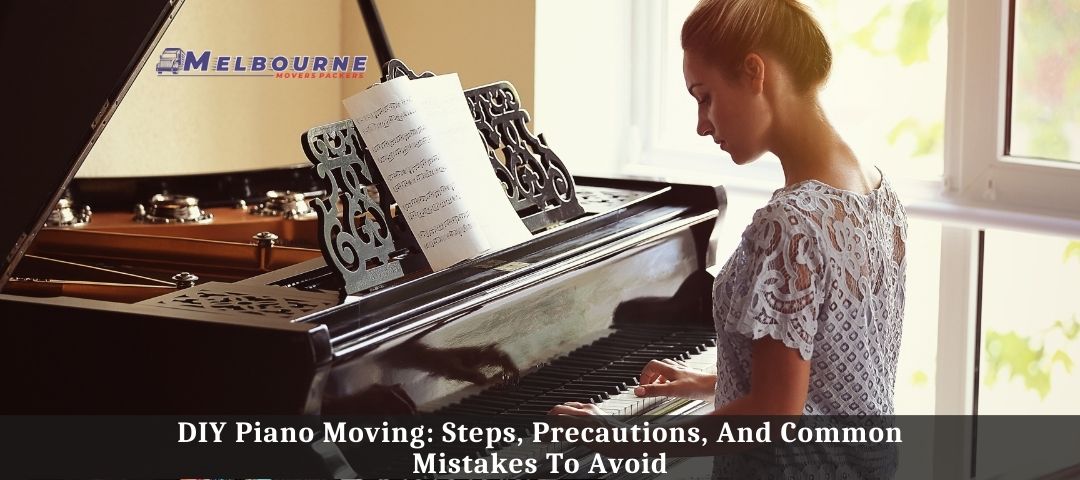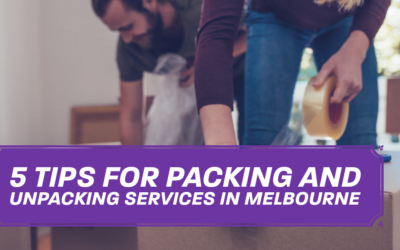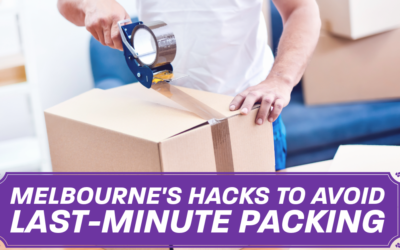Steps Of DIY Piano Moving
Moving a piano requires careful planning and organization. Follow these steps to ensure a successful DIY piano move:
1. Assessing The Size And Weight Of Your Piano
The first step in DIY piano moving is to assess the size and weight of your piano. This information is crucial for planning appropriate transportation and acquiring the necessary equipment. Here’s how to go about it:
- Measure The Dimensions: Start by measuring the height, width, and depth of your piano. Use a measuring tape to get accurate measurements. Record these dimensions, as they will help you determine the space requirements for transportation.
- Determine The Weight: Pianos can vary significantly in weight, depending on their type and size. To determine the weight of your piano, consult the manufacturer’s specifications or refer to the original purchase documentation. If this information is not available, you can estimate the weight based on the piano’s type:
- Upright Pianos: On average, upright pianos weigh between 300 to 800 pounds (136 to 363 kilograms). However, larger models can weigh up to 900 pounds (408 kilograms) or more.
- Grand Pianos: The weight of grand pianos can range from 500 to 1,500 pounds (227 to 680 kilograms). Smaller baby grand pianos typically weigh around 500 to 800 pounds (227 to 363 kilograms), while concert grand pianos can weigh over 1,000 pounds (454 kilograms) or more.
By accurately assessing the size and weight of your piano, you can proceed with the necessary preparations for the move.
2. Gathering The Necessary Tools And Equipment
To ensure a safe and successful DIY piano move, it’s essential to gather the right tools and equipment. Having the proper equipment will help protect the piano from damage during transportation. Here are the essential tools you’ll need:
- Straps: Heavy-duty straps are crucial for securing the piano to a dolly or other moving equipment. Look for straps specifically designed for heavy lifting to ensure they can handle the weight of the piano.
- Furniture Dollies: Furniture dollies with sturdy wheels are instrumental in transporting the piano. Make sure to choose dollies with a weight capacity that exceeds the weight of your piano.
- Moving Blankets: Moving blankets provide a protective layer around the piano, preventing scratches, dents, or other damage during the move. Use thick, padded blankets designed specifically for moving purposes.
- Padding Materials: Additional padding materials such as foam, bubble wrap, or moving pads can be used to provide extra cushioning for delicate parts of the piano.
- Piano Covers: Specialized piano covers offer an added layer of protection against dust, dirt, and minor impacts during transportation. These covers are designed to fit snugly over the piano and provide full coverage.
Make sure to gather all the necessary tools and equipment well in advance of the moving day. This way, you’ll have everything you need readily available, ensuring a smooth and protected piano move.
3. Clearing The Pathways
Before attempting to move the piano, it’s crucial to ensure that the pathway from its current location to the moving vehicle is clear of any obstacles or potential hazards. Clearing the pathways will provide a safe and unobstructed route for the piano’s transportation. Here’s what you should do:
- Remove Obstacles: Take a thorough look at the pathway and identify any objects, furniture, or other items that may obstruct the piano’s movement. Clear them out of the way to create a clear path.
- Check For Doorway Clearance: Measure the width and height of doorways, hallways, and staircases along the path. Ensure that these spaces provide enough clearance for the piano to pass through without any issues. If necessary, remove doors or hinges temporarily to create additional space.
- Protect Flooring: Consider protecting the flooring along the pathway, especially if you are moving the piano over delicate surfaces such as hardwood or tile. Lay down protective coverings such as carpet runners or cardboard to prevent any damage or scratches.
By clearing the pathways, you minimize the risk of accidents or damage to the piano and create a smooth passage for its transportation.
4. Disassembling Removable Parts (if applicable)
Some pianos have removable parts such as legs, pedals, or music stands. If your piano has any detachable components, it’s important to disassemble them before the move. Disassembling these parts will not only make the piano more manageable to transport but also prevent any potential damage during the move. Follow these steps:
- Refer To The Manufacturer’s Instructions: Check if the manufacturer provides specific instructions on how to disassemble and pack removable parts. If available, follow these guidelines for safe disassembly.
- Label And Keep Track Of Parts: As you disassemble the piano, label each part and keep track of them to ensure easy reassembly later. Use removable labels or tape to mark each piece with its corresponding location.
- Pack Removable Parts Separately: Once disassembled, pack the removable parts securely in separate boxes or containers. Use padding materials such as bubble wrap or moving blankets to protect each component from damage.
- Keep Hardware And Fasteners Together: Place any screws, bolts, or other hardware in a clearly labeled bag or container. This will ensure that you have all the necessary hardware for reassembly.
Disassembling removable parts reduces the overall weight and size of the piano, making it easier to maneuver and transport. It also helps prevent any potential damage to fragile components during the move.
5. Wrapping And Protecting The Piano
Properly wrapping and protecting the piano is crucial to safeguard it from scratches, dents, or other damage during the move. The piano’s delicate surfaces and intricate details require careful handling. Follow these steps to wrap and protect your piano effectively:
- Clean The Piano: Before wrapping, make sure to clean the piano’s surface with a soft cloth to remove any dust or debris. This will prevent particles from scratching the piano’s finish during the wrapping process.
- Use Moving Blankets: Begin by draping moving blankets over the piano’s top and sides. Ensure that the entire piano is covered with the blankets, leaving no exposed areas.
- Secure The Blankets: Use packing tape or straps to secure the moving blankets tightly around the piano. This will prevent them from slipping or shifting during transportation.
- Pay Attention To The Legs And Pedals: For upright pianos, consider using extra padding or blankets to protect the legs and pedals. Wrap these areas individually to provide additional cushioning and prevent any damage.
- Use Piano Covers: If you have specialized piano covers, place them over the wrapped piano for added protection. The covers will provide an extra layer of defense against dust, dirt, and minor impacts.
By wrapping and protecting the piano properly, you minimize the risk of damage to its delicate surfaces and ensure its safe arrival at the new location.
6. Securing The Piano Properly
Securing the piano properly is vital to prevent any movement or shifting during transportation.
This step is essential to maintain the piano’s stability and protect it from potential damage. Follow these guidelines to secure the piano effectively:
- Use Straps Or Heavy-Duty Ropes: Secure the piano to a dolly or other moving equipment using heavy-duty straps or ropes. Make sure the straps are tightly fastened, ensuring the piano remains stable and secure.
- Wrap The Straps Around The Piano: Position the straps around the piano in such a way that they distribute the weight evenly. Avoid placing the straps over delicate areas or parts that could be easily damaged.
- Use Multiple Straps: If possible, use more than one strap to secure the piano. This provides additional stability and prevents any imbalance during the move.
- Check For Stability: Once the piano is strapped, test its stability by gently rocking it back and forth. Ensure that it doesn’t shift or move excessively. If there is any movement, readjust the straps or ropes to secure the piano more firmly.
- Avoid Over-Tightening: While it’s crucial to secure the piano tightly, be cautious not to over-tighten the straps or ropes. Over-tightening can put unnecessary pressure on the piano, potentially causing damage.
By securing the piano properly, you minimize the risk of accidents or damage during transportation, ensuring a safe and smooth move.
7. Lifting And Carrying Techniques
Lifting and carrying a piano requires proper technique and multiple people to distribute the weight evenly. Follow these guidelines to ensure safe lifting and carrying:
- Seek Assistance: Pianos are heavy and cumbersome, making it essential to have assistance during the lifting process. Enlist the help of strong and capable individuals to share the lifting load.
- Use Proper Lifting Techniques: Lift the piano using your legs, not your back, to avoid strain or injury. Bend your knees, keep your back straight, and lift with your leg muscles. Maintain a firm grip on the piano to ensure control and stability.
- Communicate And Coordinate: Before lifting, establish clear communication with your team members. Plan the lifting sequence and ensure everyone is ready and synchronized in their movements.
- Distribute The Weight: When lifting, distribute the weight of the piano evenly among the lifters. This helps maintain balance and reduces the risk of dropping or tilting the piano.
- Move Slowly And Carefully: Take slow and deliberate steps when carrying the piano. Avoid sudden movements or jerks that could cause instability. Be aware of your surroundings and any potential obstacles.
Remember, pianos are heavy and delicate instruments, so exercise caution and prioritize safety during the lifting and carrying process.
8. Loading The Piano Into A Vehicle
Loading the piano into a vehicle requires careful maneuvering and the use of proper equipment. Follow these steps to load the piano safely:
- Use A Sturdy Ramp: If possible, use a sturdy ramp or loading dock to facilitate the transfer of the piano from ground level to the vehicle. Ensure that the ramp is secure, stable, and wide enough to accommodate the piano’s size.
- Position The Vehicle Properly: Park the vehicle as close as possible to the piano’s location to minimize the distance for carrying. The vehicle should be on a flat surface and in a stable position to ensure safe loading.
- Utilize A Hydraulic Lift (if available): If you have access to a hydraulic lift or similar equipment, it can greatly simplify the loading process. Position the lift adjacent to the piano, aligning it with the vehicle’s entrance.
- Coordinate And Lift With Caution: With the help of your team members, carefully lift the piano and maneuver it towards the vehicle. Ensure that everyone involved is in sync and moves in a coordinated manner.
- Align And Slide The Piano: Position the piano at the entrance of the vehicle, aligning it carefully with the available space. Slowly slide the piano into the vehicle, making sure it remains stable and centered.
- Secure The Piano In The Vehicle: Once the piano is inside the vehicle, use straps or ropes to secure it firmly. Fasten the straps to the vehicle’s anchor points or tie-downs, ensuring the piano doesn’t shift or move during transit.
By following these DIY piano moving steps, you can load the piano safely into the vehicle, ready for the piano transportation to its new destination.
Precautions For DIY Piano Moving
Here are the following precautions you should take before moving your valuable piano yourself:
- Assess Your Physical Capability And Resources: Before attempting a DIY piano move, honestly assess your physical capabilities and ensure you have enough manpower and suitable tools to handle the task safely.
- Protect Yourself From Injuries: Use proper lifting techniques, wear appropriate clothing and footwear, and consider using supportive gear to minimize the risk of personal injury.
- Secure Adequate Insurance Coverage: Ensure you have adequate insurance coverage to protect your piano in case of any accidents or damage during the move.
- Plan For Weather Conditions: Take extra precautions when moving a piano in inclement weather. Cover the piano with waterproof materials and ensure the pathway and vehicle are safe and clear.
- Communicate And Coordinate: Establish effective communication and coordination among the team members involved in the move to prevent missteps and accidents.
Common Mistakes To Avoid During Piano Removals
- Underestimating The Weight And Complexity: Avoid underestimating the weight and complexity of moving a piano. Understand the piano’s size and weight and allocate sufficient resources for a safe move.
- Improper Lifting Techniques: Use proper lifting techniques, such as lifting with your legs and distributing the weight evenly among lifters, to prevent injuries.
- Neglecting Protective Measures: Always use moving blankets, padding materials, and specialized piano covers to protect the piano from scratches and dents during the move.
- Rushing The Process: Take your time to plan and execute each stage of the move with precision. Rushing can lead to accidents or damage to the piano or surrounding environment.
- Failing To Plan The Pathway And Vehicle: Properly plan the pathway from the piano’s location to the moving vehicle, considering doorways, staircases, and tight corners. Also, secure the piano within the vehicle to prevent shifting during transit.
By following these precautions and avoiding common mistakes, you can ensure a safer and smoother DIY piano moving experience. However, if you have any doubts or concerns, it’s recommended to hire professional piano movers who have the expertise and equipment to handle the task efficiently and minimize risks.
Conclusion
DIY piano moving can be a challenging task, but with the right knowledge and precautions, it’s possible to accomplish it successfully. However, considering the complexity and delicate nature of pianos, it’s recommended to hire professional piano movers for hassle-free and secure piano relocation. Melbourne Movers Packers, a reputable moving company in Melbourne, Australia, offers expert piano removal services. Contact us today to ensure a smooth and stress-free piano-moving experience. Let our team of experienced piano movers in Melbourne handle your piano relocation with care and precision. Call us at 1800 865 005 for free piano moving service quotes.
Related Articles
How to Disassemble an Upright Piano for Moving
Moving an upright piano can be a daunting task due to its size, weight, and delicate components. However, with the right approach, you can disassemble it safely and make the moving process more manageable. In this blog, we will guide you through each step of...
5 Tips for Packing and Unpacking Services in Melbourne
Moving to a new house or location for work may be both thrilling and stressful. The logistics of packing and unpacking can frequently feel stressful, especially when you're in the middle of the excitement of starting over in a new place. Fortunately, professional...
Melbourne’s Hacks to Avoid Last-Minute Packing
Packing for a house move is strenuous and can go wrong in several ways. It is a tedious and time-consuming process. It’s essential to have a plan in place to ensure the process is simple and makes not only packing but unpacking a quick and swift process as well. 1....

The Melbourne Movers & Packers Team boasts 5+ years of experience writing informative content about moving and packing. Our team of moving experts understands the hassles of relocating to Melbourne. Get helpful tips and advice for your move here. We are the #1 Removalists in Melbourne.




